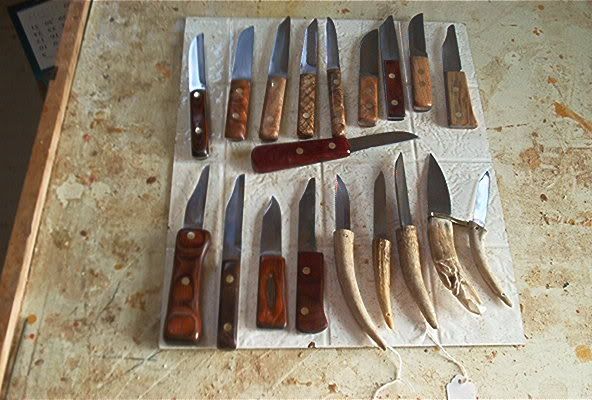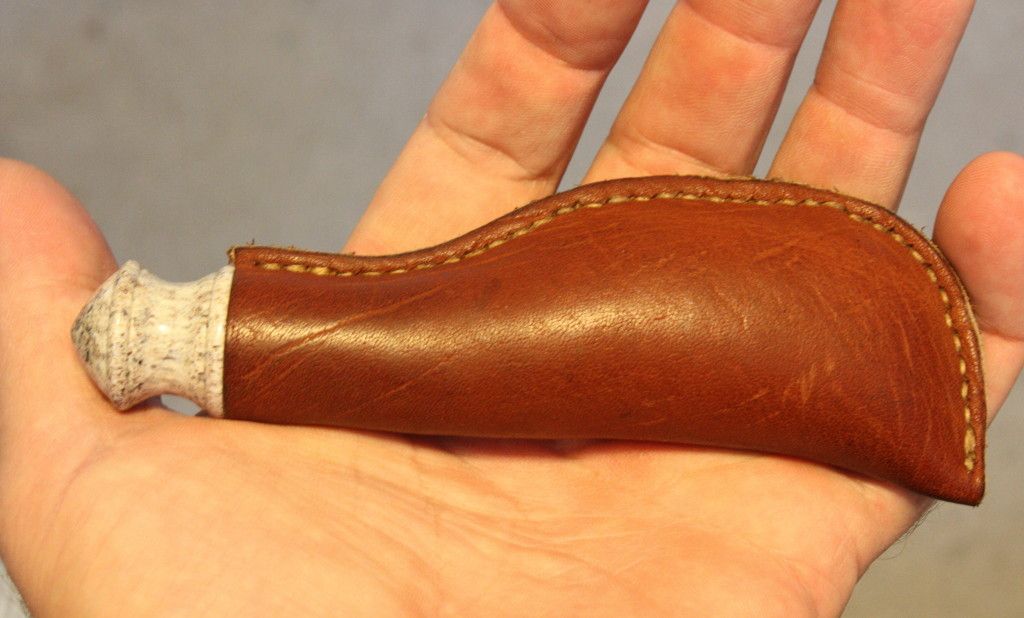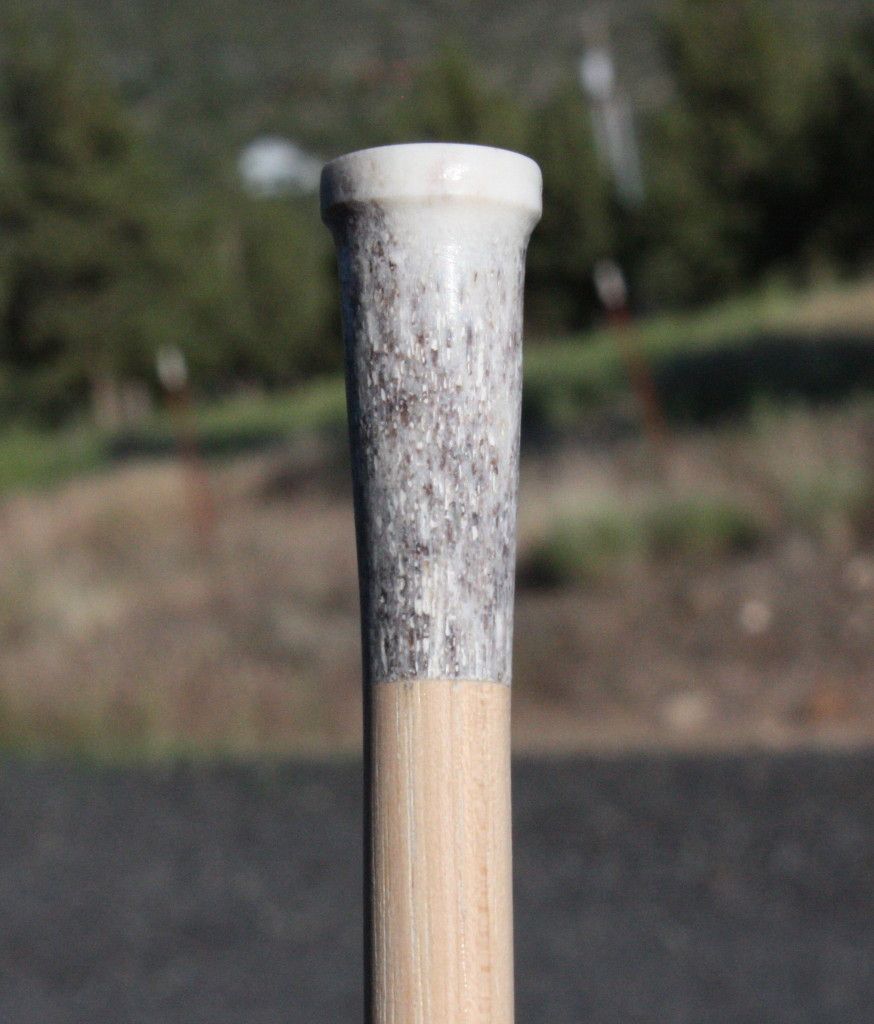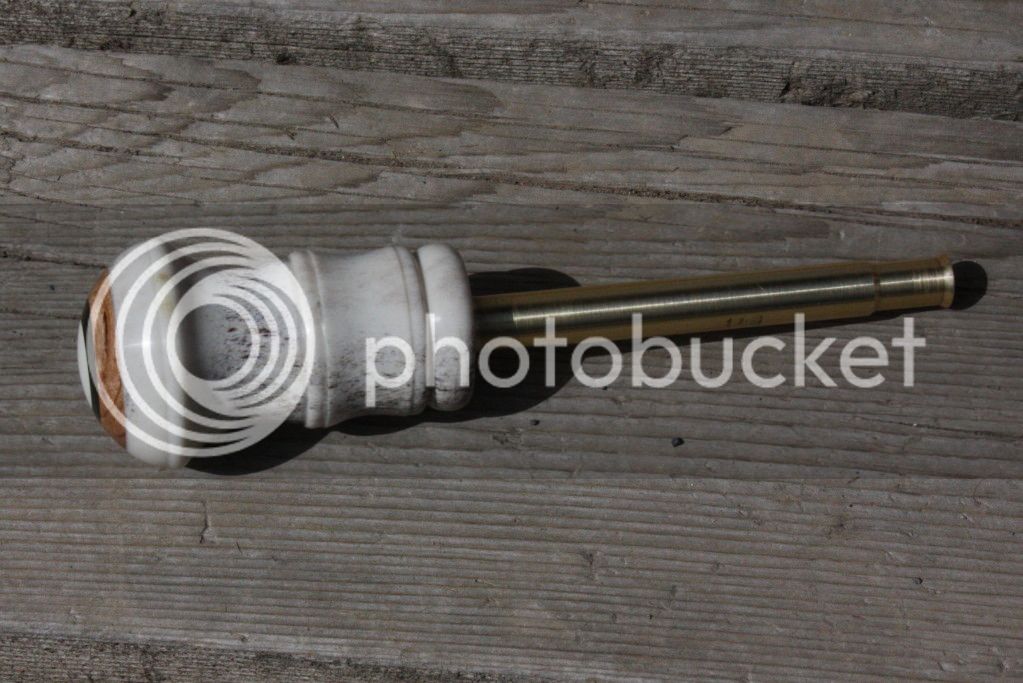What's involved in this process of stabilizing wood for knife scales, etc.? Is this an old-time process or something fairly recent?
You are using an out of date browser. It may not display this or other websites correctly.
You should upgrade or use an alternative browser.
You should upgrade or use an alternative browser.
Stabilizing wood
- Thread starter BillinOregon
- Start date

Help Support Muzzleloading Forum:
This site may earn a commission from merchant affiliate
links, including eBay, Amazon, and others.
- Joined
- Aug 25, 2003
- Messages
- 6,533
- Reaction score
- 1,509
It's recent. I can't tell you the details, but basicly it is a thin liquid plastic infusion in wood or some other materials aided by a vacuum set up.
ohio ramrod
75 Cal.
- Joined
- Aug 21, 2008
- Messages
- 7,473
- Reaction score
- 2,213
It fairly recent. I send my blanks out to Iowa to the wood stabalizing specialists. They do good work and I really like the results. :idunno:
Here ( I hope ) is a picture of some knives with stabilized handles.


Here ( I hope ) is a picture of some knives with stabilized handles.

Thanks fellas. I suspected it was a recent invention involving epoxy or something like it.
I do wood stabilizing with a vacuum set-up. My solution uses an acrylic.
Some woods are not candidates for stabilizing.
Some woods are not candidates for stabilizing.
TinStar said:What exactly does this process accomplish? I have a few butcher/kitchen knives that were my grandfather's when he was young and the wood seems ok even today. Not new looking; but not rotted either.
TinStar
Soli deo Gloria!
The wood is impregnated with either acrylic or another platic substance making it very hard and durable. Some woods will polish up without any finish being applied. Soft and/or spalted woods can be saved and utilized. Spalted wood is often very beautiful and always unique.
I think it is used on woods that have a desireable grain but are not otherwise suitable for a knife handle due to the tough use they could be subjected. I know one guy that stabilized Palm. Palm is really just a giant member of the grass family and the wood is worthless but if you soak it in resin then the material becomes useful. Normally the grain on a handle runs from front to back- in the interest of strength but if you cut the wood at an angle- a more attractive grain structure is obtained in some circumstances.
For some reason I was under the impression the resin gets impregnated into the wood under pressure of some sort. Since the wood already has resin- no further finish is required- you can buff to a satin or gloss finish.
Obviously stabilized wood is not PC. I am told logwood was used both for a dye and a handle material pre- 1840 and some of it has fancy grain. Ebony and rosewood are both nice looking.
For some reason I was under the impression the resin gets impregnated into the wood under pressure of some sort. Since the wood already has resin- no further finish is required- you can buff to a satin or gloss finish.
Obviously stabilized wood is not PC. I am told logwood was used both for a dye and a handle material pre- 1840 and some of it has fancy grain. Ebony and rosewood are both nice looking.
I have also heard of stabilizing antler? I take it thats to help with the pith?
Crockett, logwood is indeed used for dyes pre-1840,
http://books.google.com/books?id=Z28iAQA....epage&q&f=false
Crockett, logwood is indeed used for dyes pre-1840,
The Complete Dictionary of Arts and Sciences...
by Wilson, and Fell (Londres), Fletcher, and Hodson (Cambridge) (MDCCLXVI - 1766)
Dyeing Bone, Horn, or Ivory-
Black is performed by steeping brass in Aqua-fortis till it be returned green:With this the Bone &c. is to be washed once or twice; Then put in a warm decoction of Log-wood and water.
Green is begun by boiling the Bone &c. in Alum-water; Then with verdigrise, fal [?] ammoniac, and white wine vinegar; keeping it hot therein Till sufficiently green.
Red is begun by boiling it in Alum-water and finished by decoction in a liquor compounded of Quick-Lime steeped in rain water, strained, and to every pint an ounce of Brazil wood added. In this decoction the bone &c. is to be boiled till sufficiently Red.
http://books.google.com/books?id=Z28iAQA....epage&q&f=false
Last edited by a moderator:
How does the stabilized antler look? Can you still see the pith? If they could stabilize it so the pith looked like the rest of the antler- it might open up some possibilities.
There is a book by a guy I think is named Baldwin, "Primitive Knives and Sheaths". Some of the stuff is supposed to be Pre-1840 but he really doesn't date the articles that well IMHO. It is an expensive book so I read it by interlibrary back when interlibrary was available. One knife shown in the book and now on my "To Do" list is sort of a heavy scalper/butcher with a half tang inlet into an antler handle AND the antler has a tine on the underside that serves as a quillion/lower guard. Really nice looking.
Beckwourth was supposed to have a white handled knife. He was supposed to be a big liar but the reference to the white handle is probably true. I've often wondered what it was, stag? a jawbone? Just bone?
I got into knives because they are SMALL, how many full sized muzzle loaders can you have around the place? Knives- you can end up with hundreds. :grin:
There is a book by a guy I think is named Baldwin, "Primitive Knives and Sheaths". Some of the stuff is supposed to be Pre-1840 but he really doesn't date the articles that well IMHO. It is an expensive book so I read it by interlibrary back when interlibrary was available. One knife shown in the book and now on my "To Do" list is sort of a heavy scalper/butcher with a half tang inlet into an antler handle AND the antler has a tine on the underside that serves as a quillion/lower guard. Really nice looking.
Beckwourth was supposed to have a white handled knife. He was supposed to be a big liar but the reference to the white handle is probably true. I've often wondered what it was, stag? a jawbone? Just bone?
I got into knives because they are SMALL, how many full sized muzzle loaders can you have around the place? Knives- you can end up with hundreds. :grin:
ohio ramrod
75 Cal.
- Joined
- Aug 21, 2008
- Messages
- 7,473
- Reaction score
- 2,213
The pith still looks like pith! I have had some antler slabs stabilized and have yet to have any break! :idunno:
ApprenticeBuilder
58 Cal.
- Joined
- May 27, 2006
- Messages
- 2,528
- Reaction score
- 189
You can stabilize the material with hobby grade ca glue (super glue), you can buy different thickness' of glue.
Thinner stuff penetrates into the pores and the thicker stuff fills in real good, mixed with sanding dust it can be quite the contrast, this process will also work on most exotic woods.
I start with the thin and then follow up with the thicker stuff. (medium thickness)
The stopper/measure on this shot pouch is turned elk antler right through the pith, its very sturdy when sealed this way.

Here is a loading rod with elk antler tip finished out the same way.

Ball Starter

Thinner stuff penetrates into the pores and the thicker stuff fills in real good, mixed with sanding dust it can be quite the contrast, this process will also work on most exotic woods.
I start with the thin and then follow up with the thicker stuff. (medium thickness)
The stopper/measure on this shot pouch is turned elk antler right through the pith, its very sturdy when sealed this way.

Here is a loading rod with elk antler tip finished out the same way.

Ball Starter

Apprenticebuilder: Wow those are handsome items. You are a good hand on the lathe!
For some reason I was under the impression the resin gets impregnated into the wood under pressure of some sort. Since the wood already has resin- no further finish is required- you can buff to a satin or gloss finish.
To respond specifically: Yes, no, sometimes and maybe. :grin:
Some woods will buff and polish beautifully when stabled. Some don't. Many woods do not change appearance when stabled and that should be good news to the PC conscious guys out there.
I do mine with a vacuum.
For casting with thicker resins pressue is often used.
But the guys who stable and cast have more conflicting opinions on that subject than the ml crowd has.
Some woods will not take stable at all. Most of the rosewoods (ironwood, cocobolo, ebony, etc.) will not take stable at all.
I have never tried to stable antler or bone. Methinks that filling the pith on antler would be better done with a thick CA or epoxy. Stable impregnates the cellular matrix. If there are holes before stable, there will be holes after.
ApprenticeBuilder
58 Cal.
- Joined
- May 27, 2006
- Messages
- 2,528
- Reaction score
- 189
Thanks for noticing Bill,
With the work I have done in this area I probably would not send anything out to have it stabilized.
Using the thin glue as the stabilizer and the thicker glue as the filler/sealer seems to work very well for my needs and the results are repeatable in either wood or bone and the material is very solid when finished in this manner.
With the work I have done in this area I probably would not send anything out to have it stabilized.
Using the thin glue as the stabilizer and the thicker glue as the filler/sealer seems to work very well for my needs and the results are repeatable in either wood or bone and the material is very solid when finished in this manner.
Robert Egler
50 Cal.
- Joined
- Jul 17, 2007
- Messages
- 1,319
- Reaction score
- 26
Those are really nice! I'm going to have to try the superglue method. Thanks for explaining! :hatsoff:
ApprenticeBuilder
58 Cal.
- Joined
- May 27, 2006
- Messages
- 2,528
- Reaction score
- 189
While I am finishing this process out I do not wipe away the sanding dust, I leave it in place and it fills the openings in the pith, rinse and repeat until the surface is as you want.
A clean paper towel works well as an applicator as the thicker glue takes as much as 10 seconds to set.
The thinner glue reacts like water, messy and dries very fast.
But the way, watch out for your fingers and hands.
A clean paper towel works well as an applicator as the thicker glue takes as much as 10 seconds to set.
The thinner glue reacts like water, messy and dries very fast.
But the way, watch out for your fingers and hands.
for my needs
Stabilizing fills needs for many purposes and has several advantages over unstabled wood.
ApprenticeBuilder
58 Cal.
- Joined
- May 27, 2006
- Messages
- 2,528
- Reaction score
- 189
Rifleman1776 said:for my needs
Stabilizing fills needs for many purposes and has several advantages over unstabled wood.
oh sure,
What I do with the CA glue is akin to "case hardening" vrs the "thru hardening" of the injected acrylics, for my needs a durable finish with a measure of stability added to the pourous areas of the work.
GunnyGene
75 Cal.
You can buy a good wood stabilizer here: http://www.woodcraft.com/PRODUCT/2...ode=10INGOPB&gclid=CMKB6f3ai7QCFQSqnQodox0APw
Should be used with a vacuum setup, which you can put together with a gallon (or quart) jar and a vacuum pump (electric or manual) you can get at Walmart or a auto supply.
http://www.rodbuildingtutorials.com/Grip & Handle Tutorials/Stabilizing Wood with Min-Wax.pdf
Should be used with a vacuum setup, which you can put together with a gallon (or quart) jar and a vacuum pump (electric or manual) you can get at Walmart or a auto supply.
http://www.rodbuildingtutorials.com/Grip & Handle Tutorials/Stabilizing Wood with Min-Wax.pdf
Last edited by a moderator:
Similar threads
- Replies
- 1
- Views
- 520




